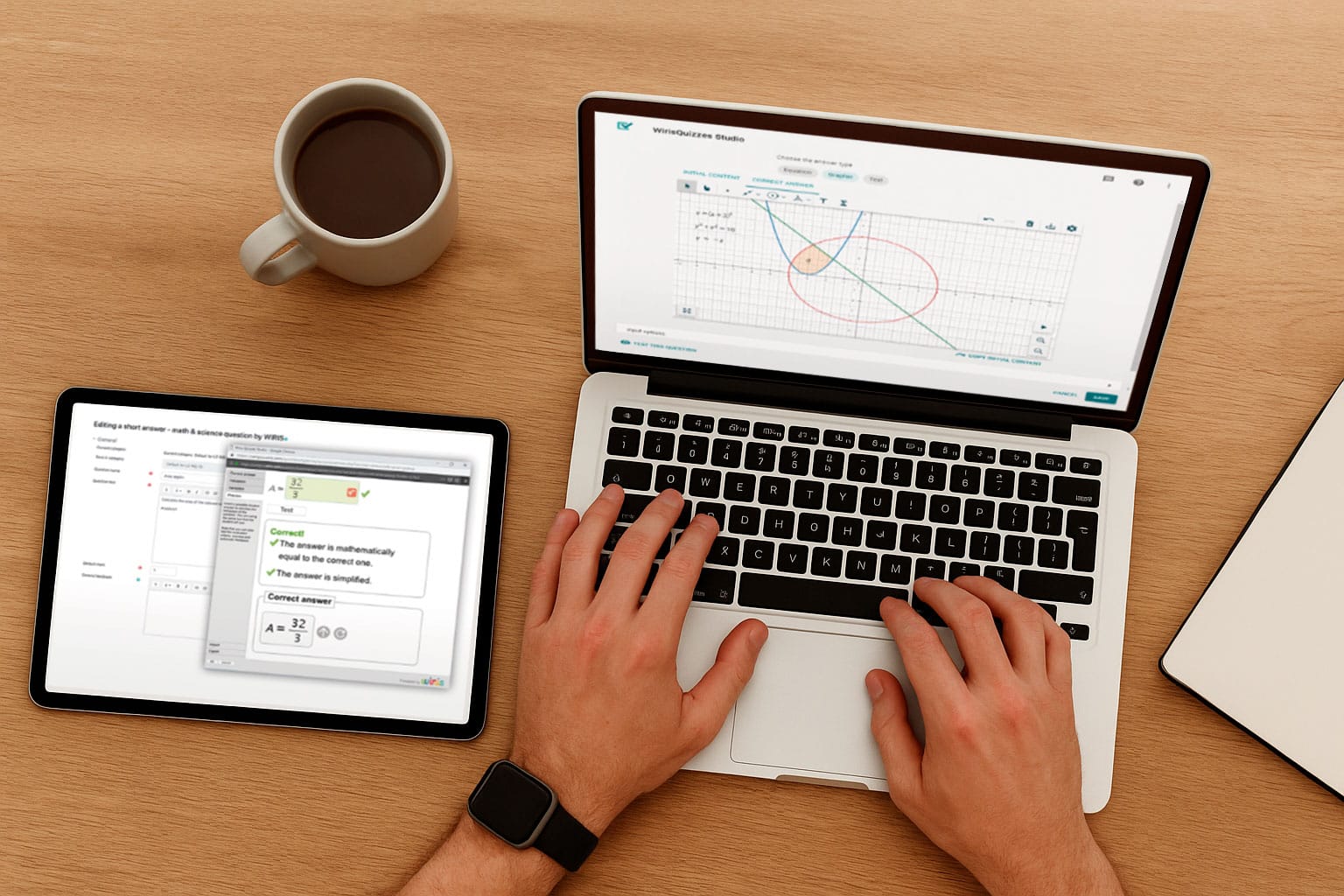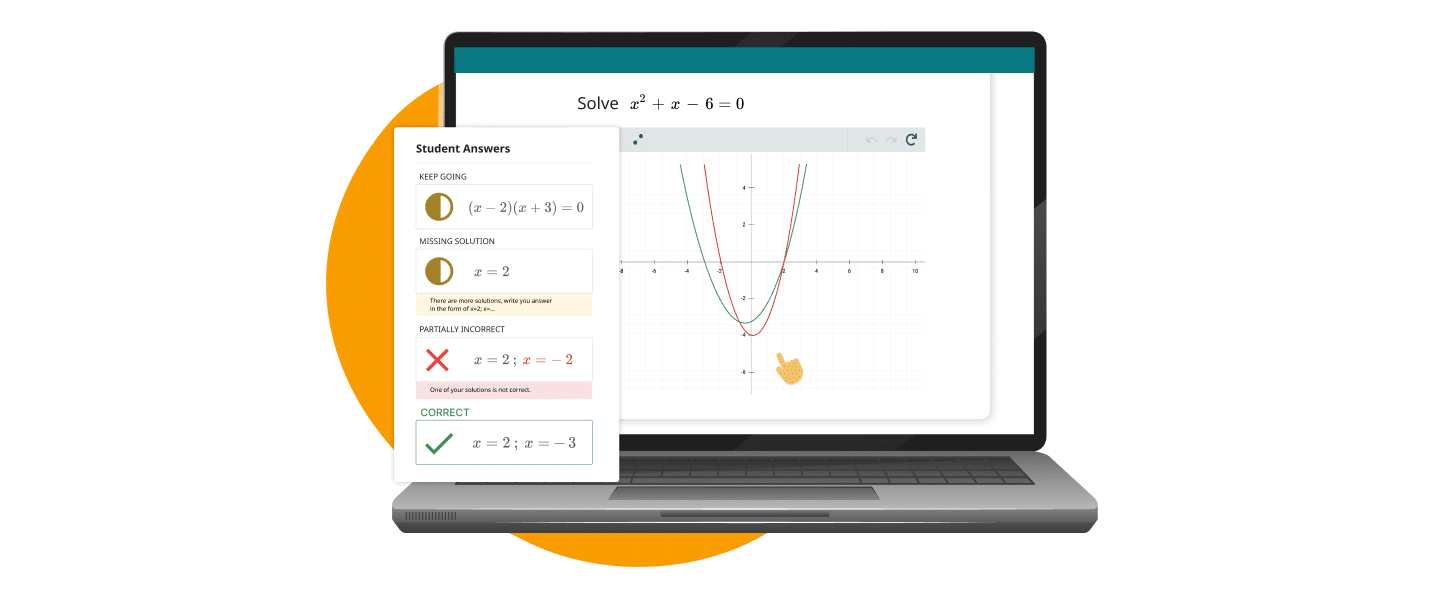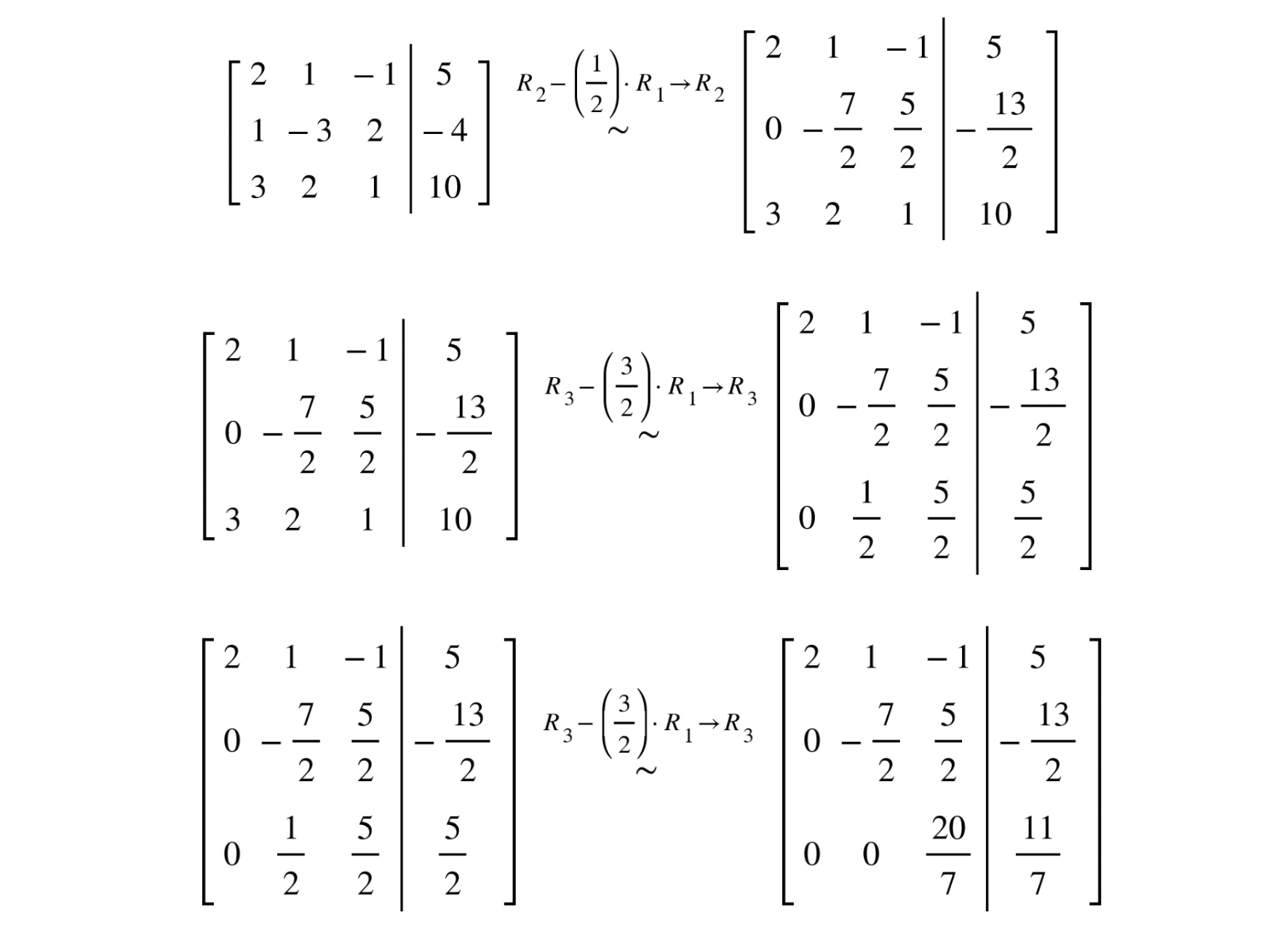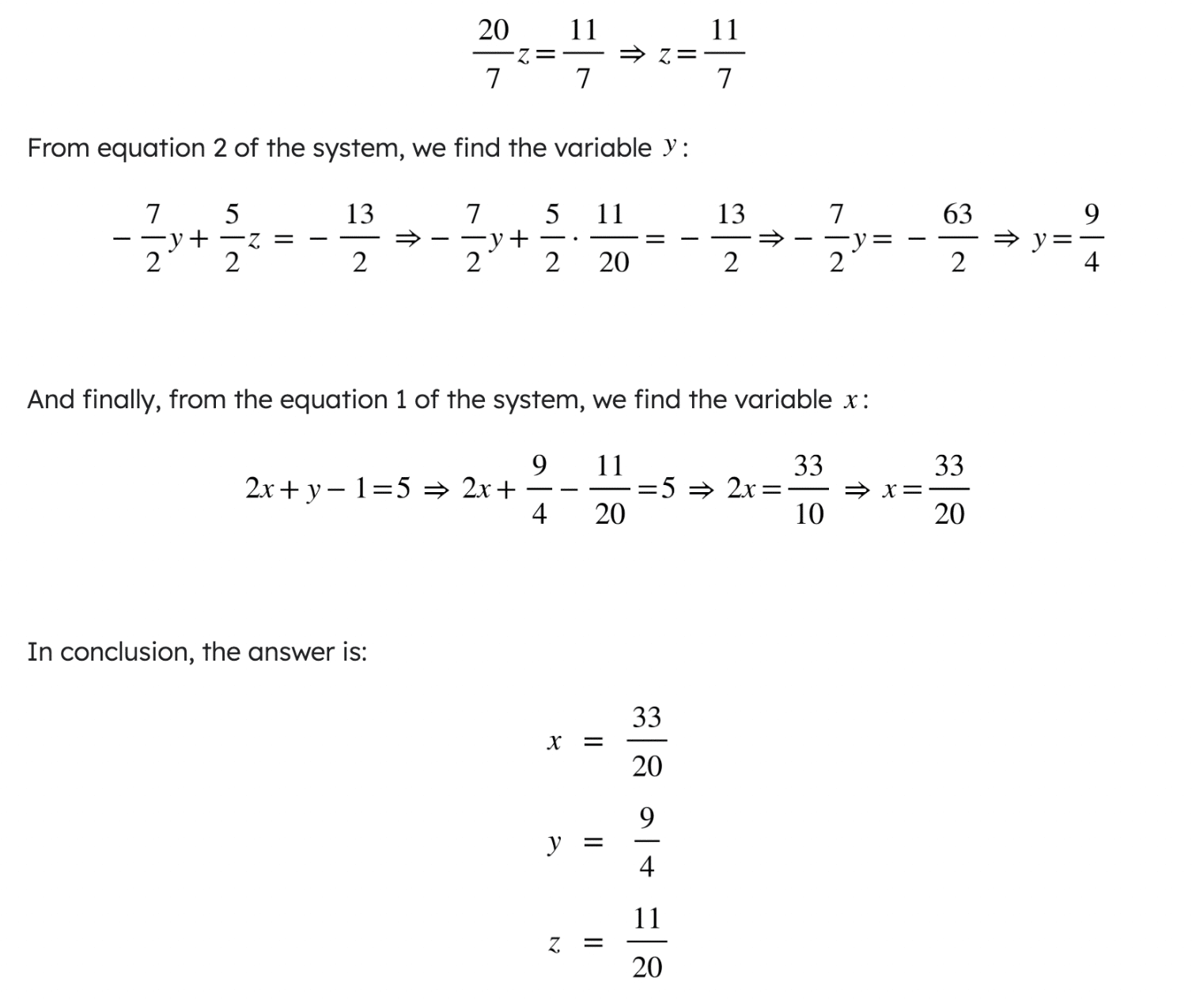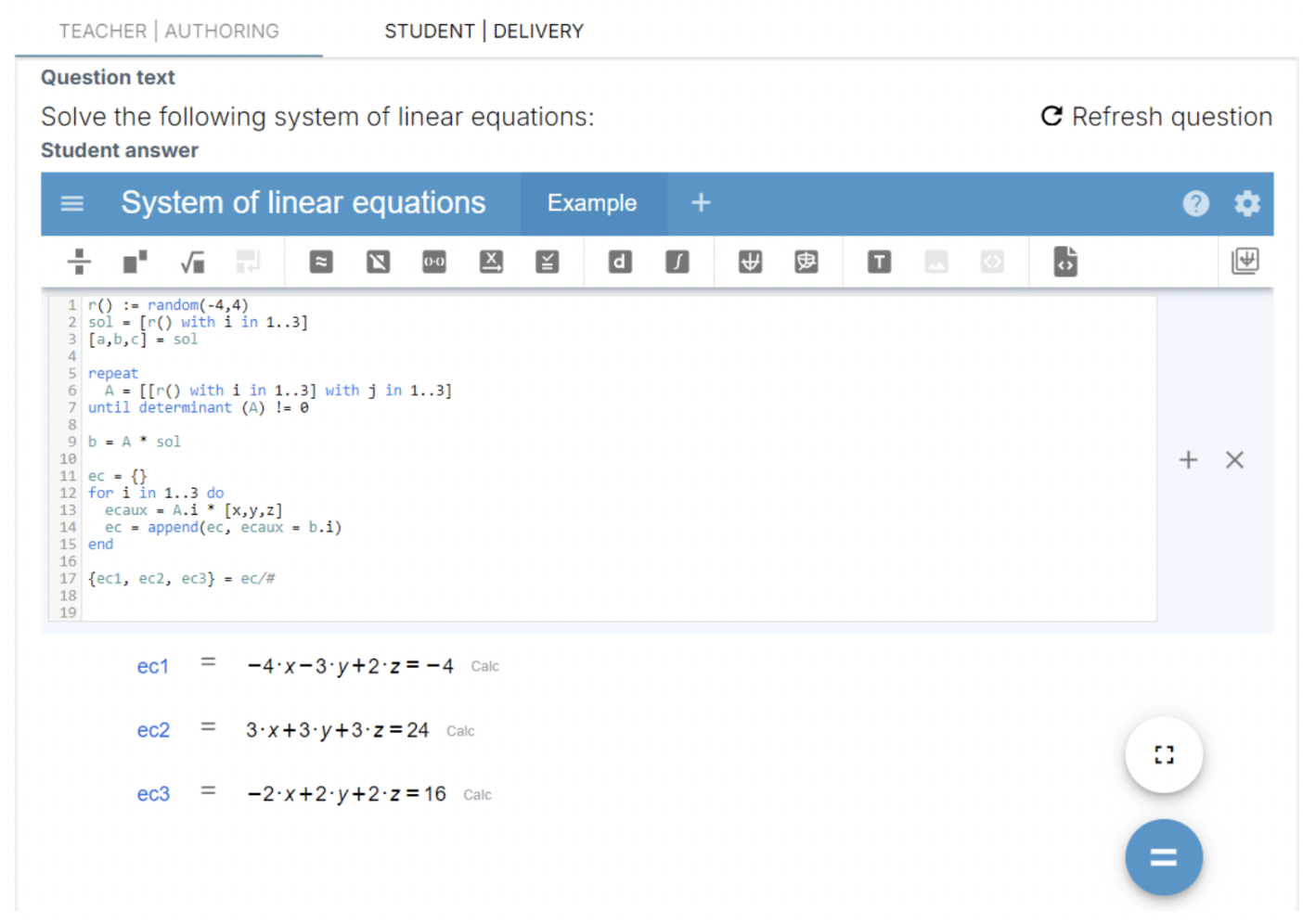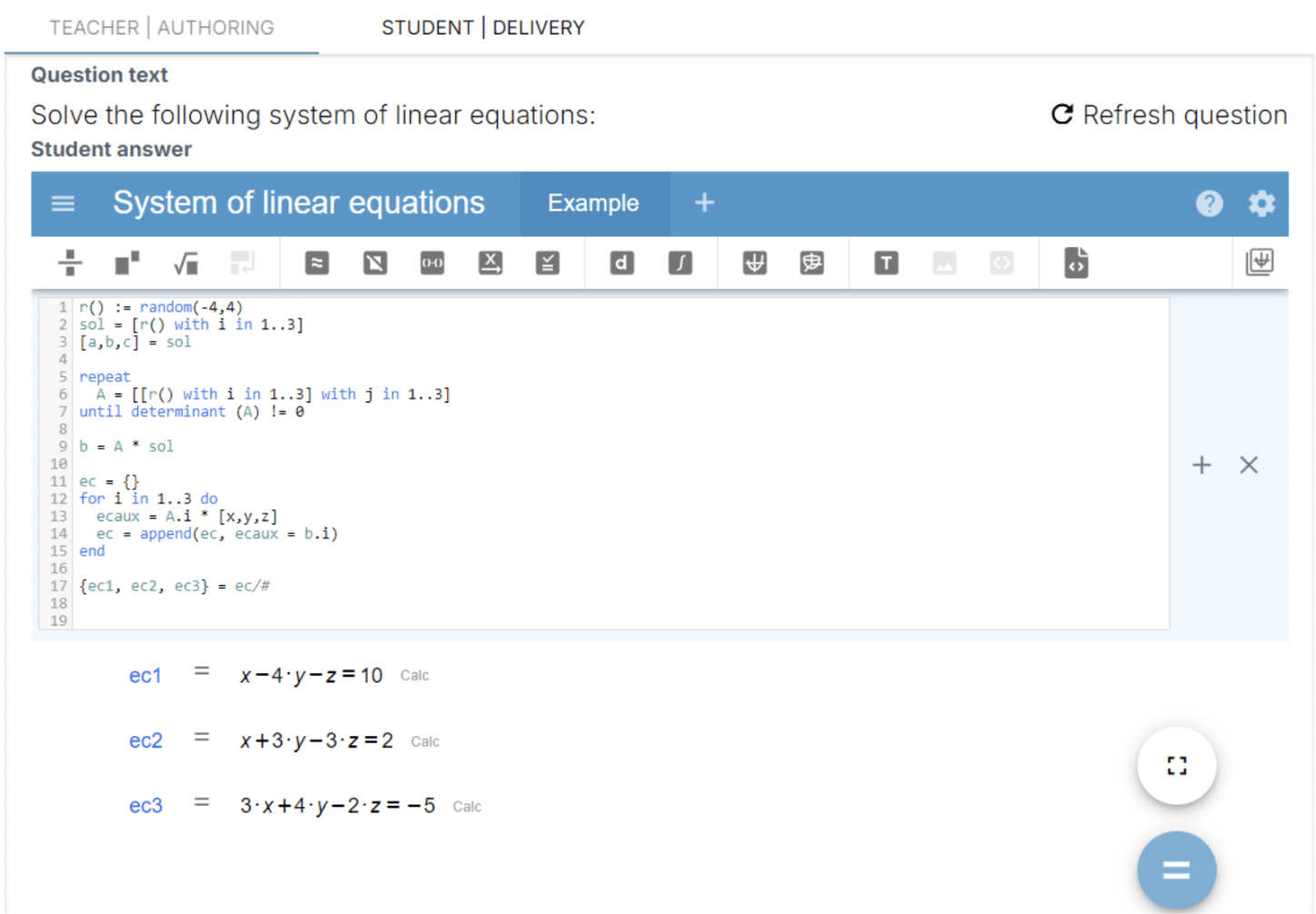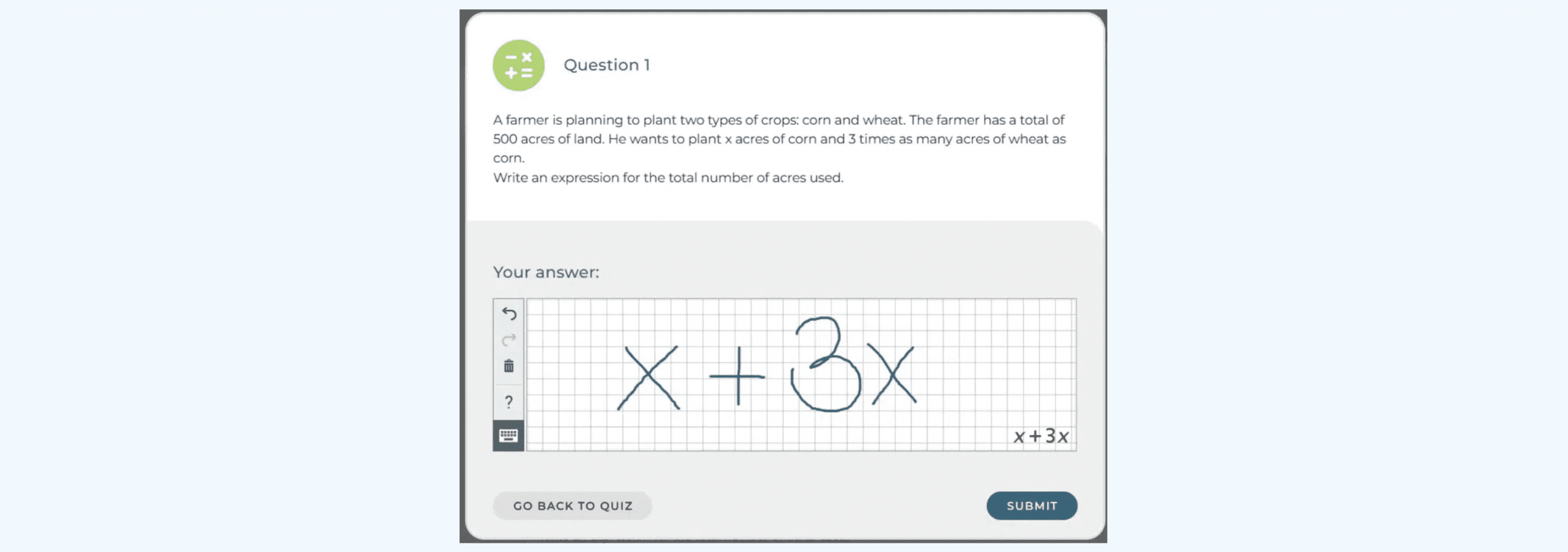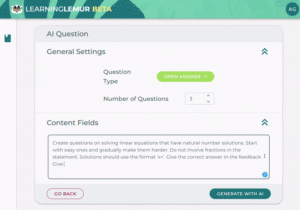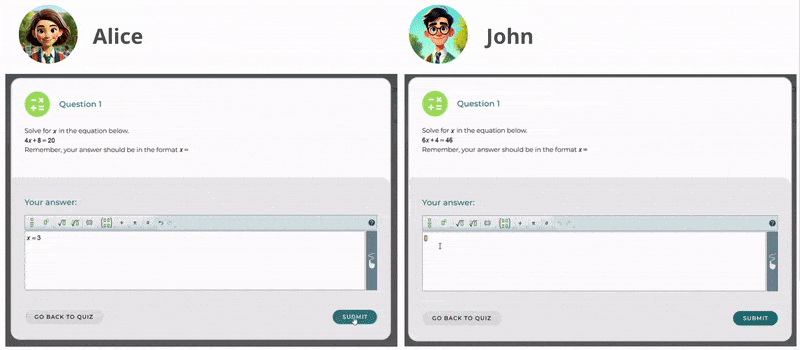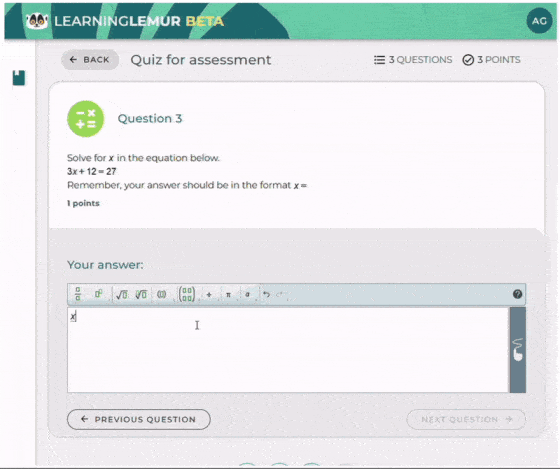Step-by-step Solution to an Oxford Access Exam Problem.
The Oxford University access exams are famous for their difficulty and for challenging students with mathematical problems of high complexity. In this article, we will focus on a 2020 exam problem that involves calculating the area between two curves. Through a clear and detailed analysis, we will break down each step necessary to approach and solve this mathematical challenge.
If you are interested, feel free to also visit our other article, “How to solve an equation of degree 16”, where we explore another challenging Oxford exam problem.
The problem statement is as follows:
A line is tangent to the parabola y=x² at the point (a,a²), where a>0.
The area of the region bounded by the parabola, the tangent line, and the x-axis equals

This is a classic calculus problem that, as we will see, requires the use of both derivatives and integrals. Don’t worry; we’ll break it down into three clear and simple steps. Let’s get to it!
How to Find the Equation of the Tangent Line?
Before starting with the calculations, let’s visualize the problem. Below, you’ll see a graph illustrating the parabola y=x² and the tangent line at the point (a, a²), where a>0. In this graph, we can see how the tangent line touches the curve of the parabola at a single point without crossing it.
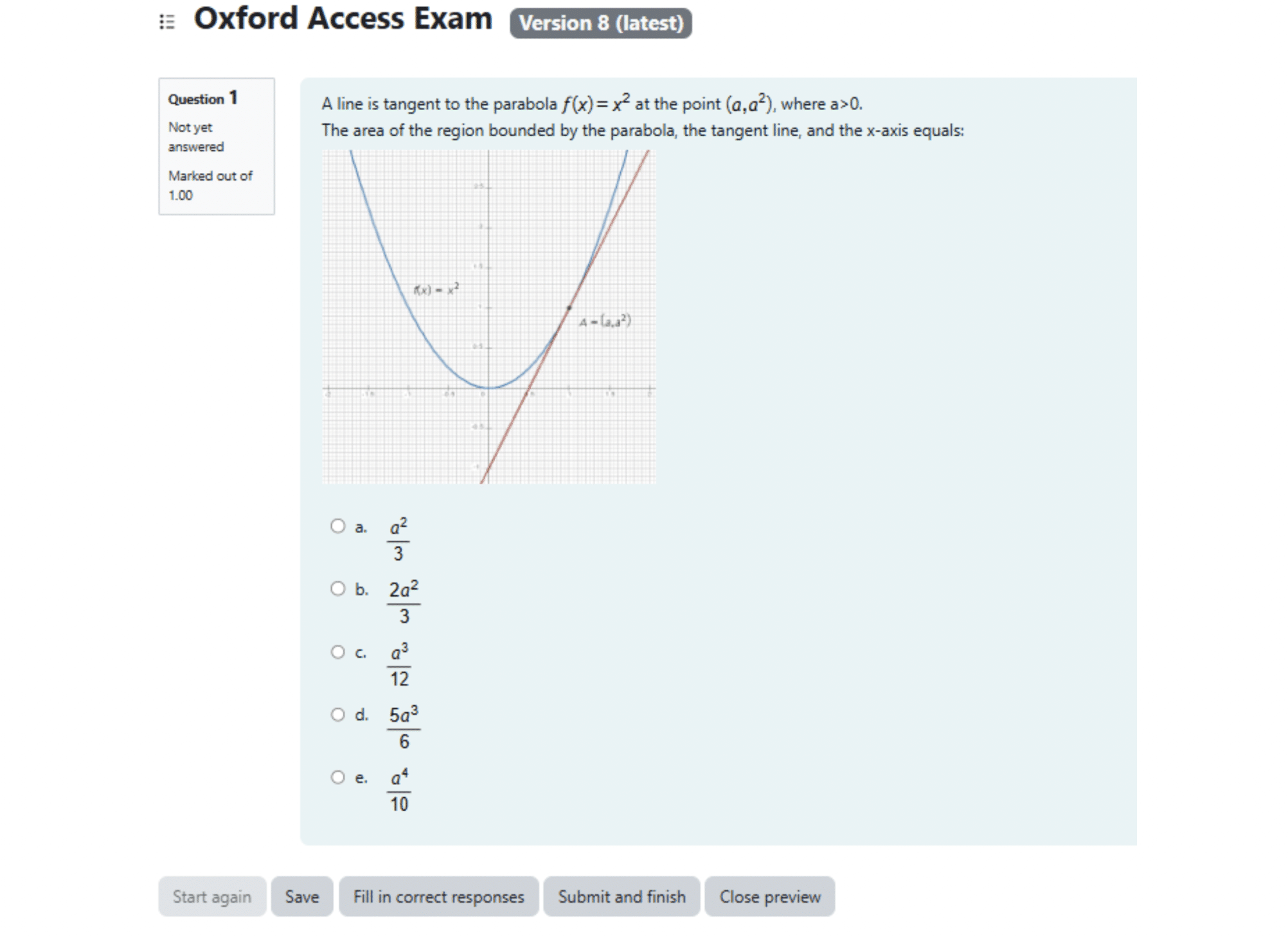
Now, to proceed, we first need to find the equation of the tangent line at that specific point. Since the tangent touches the parabola at point (a, a²), we need to determine both its slope and its equation.
This is where the derivatives come into play. The slope of the tangent at any point on the parabola is given by the derivative of the function y=x². We start by calculating the derivative:
This means that the slope of the tangent at any point on the parabola is 2x. To find the slope at the tangent point (a, a²), we substitute in the derivative:

Therefore, the slope of the tangent line at point (a, a²) is 2a.
Now that we have the slope, we can write the equation of the tangent line using the formula for the line in its form:
y – y0 = m (x – x0)
Where m is the slope of the line, and (x0 , y0) is the point through which the line passes. In our case, the point of tangency is (a, a²), and the slope is 2a, so we substitute these values in the formula for the line:
y – a² = 2a (x-a)
y – a² = 2ax – 2a²
y = 2ax – a²
So, the equation of the tangent line at the point (a, a²) is:
y = 2ax – a²
Find the Intersection Points
Now that we have the equation of the tangent, we need to find the points of intersection between this tangent and the x-axis, that is, when y=0. This will allow us to determine the limits of the region whose area we want to calculate.
The area to be calculated is marked in orange in the graph below.
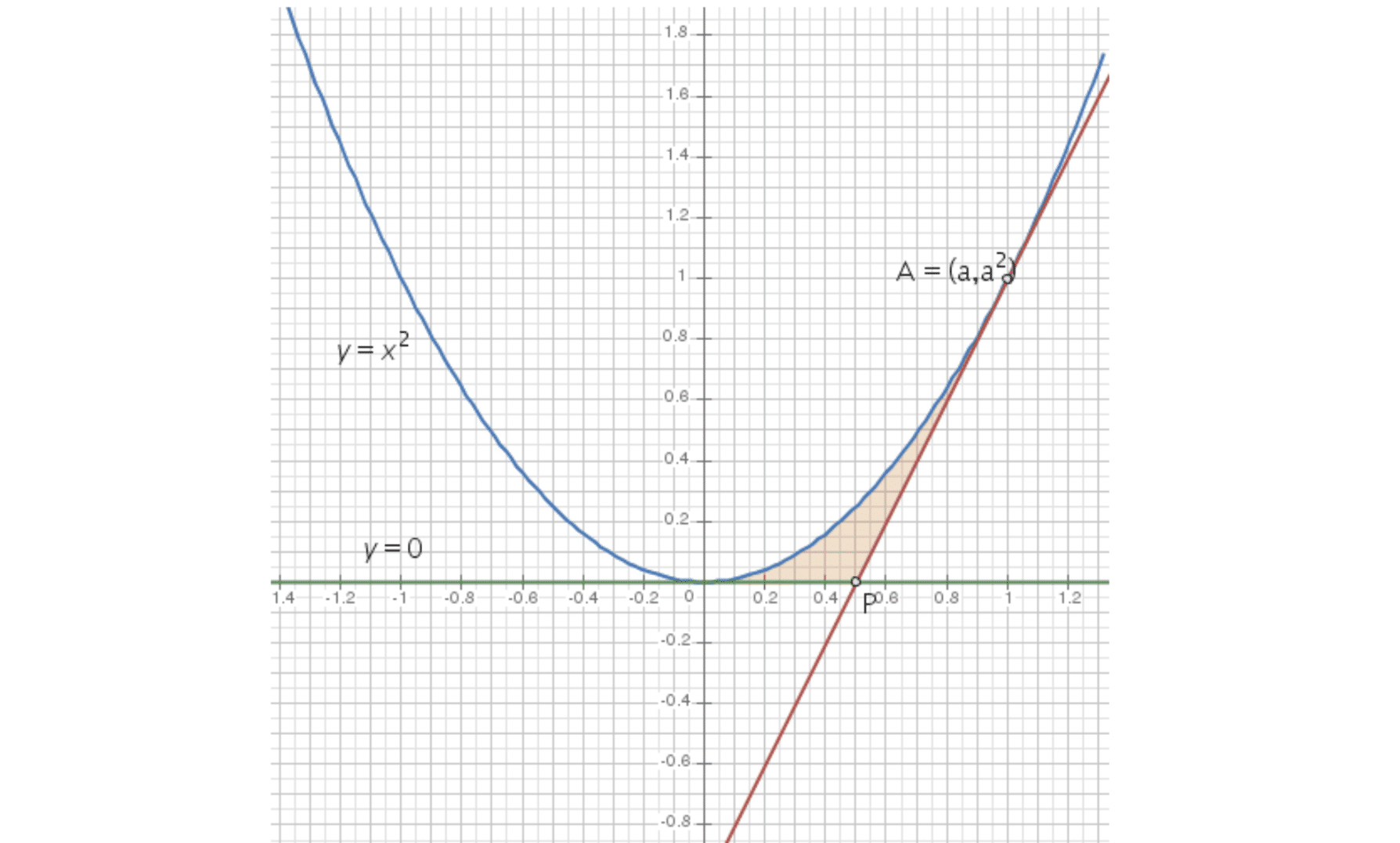
Substituting y=0 in the tangent equation and solving for x we obtain:
0= 2ax – a²
2ax = a²
x = a/2
So the tangent cuts the x-axis at point

Calculate the Area Between the Parabola, the Tangent and the X-axis
Once we have the equation of the tangent and we know the points of intersection, we can proceed to calculate the area of the region bounded by the parabola, the tangent and the x-axis. For this, we use the definite integral, which allows us to find the area between two curves.
The area we want to calculate is obtained by subtracting two regions. In the first graph, you can see the total region we are interested in. However, part of this area is specifically delimited in the second graph, which we must subtract to be left with only the part we are looking for.
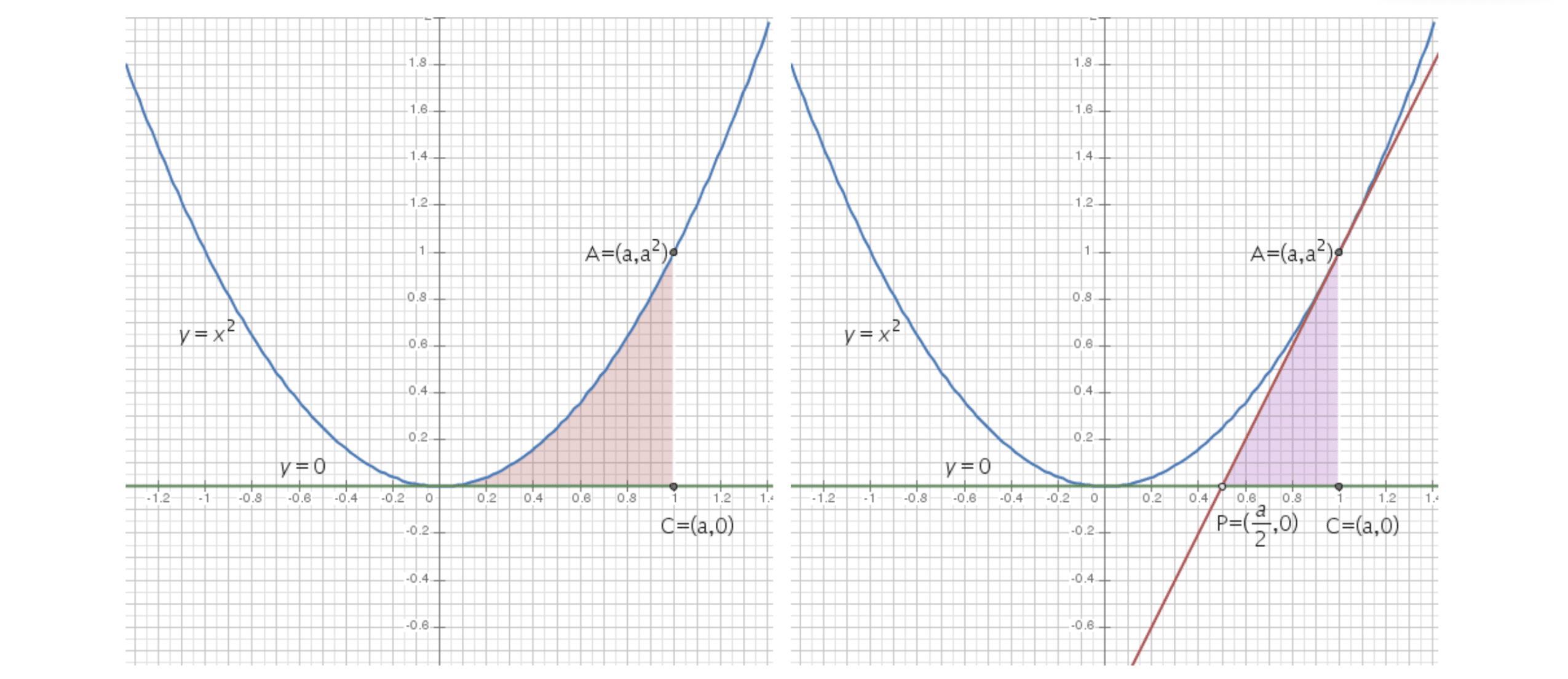
Let us calculate both integrals:
a) Integral of graph 1:

b) Integral of graph 2:

Now that we have solved all the integrals, we subtract the results to obtain the total area:

In conclusion, the area of the region bounded by the parabola y = x², the tangent y = 2ax – a² and the x-axis, is:

Therefore, option c is the correct answer
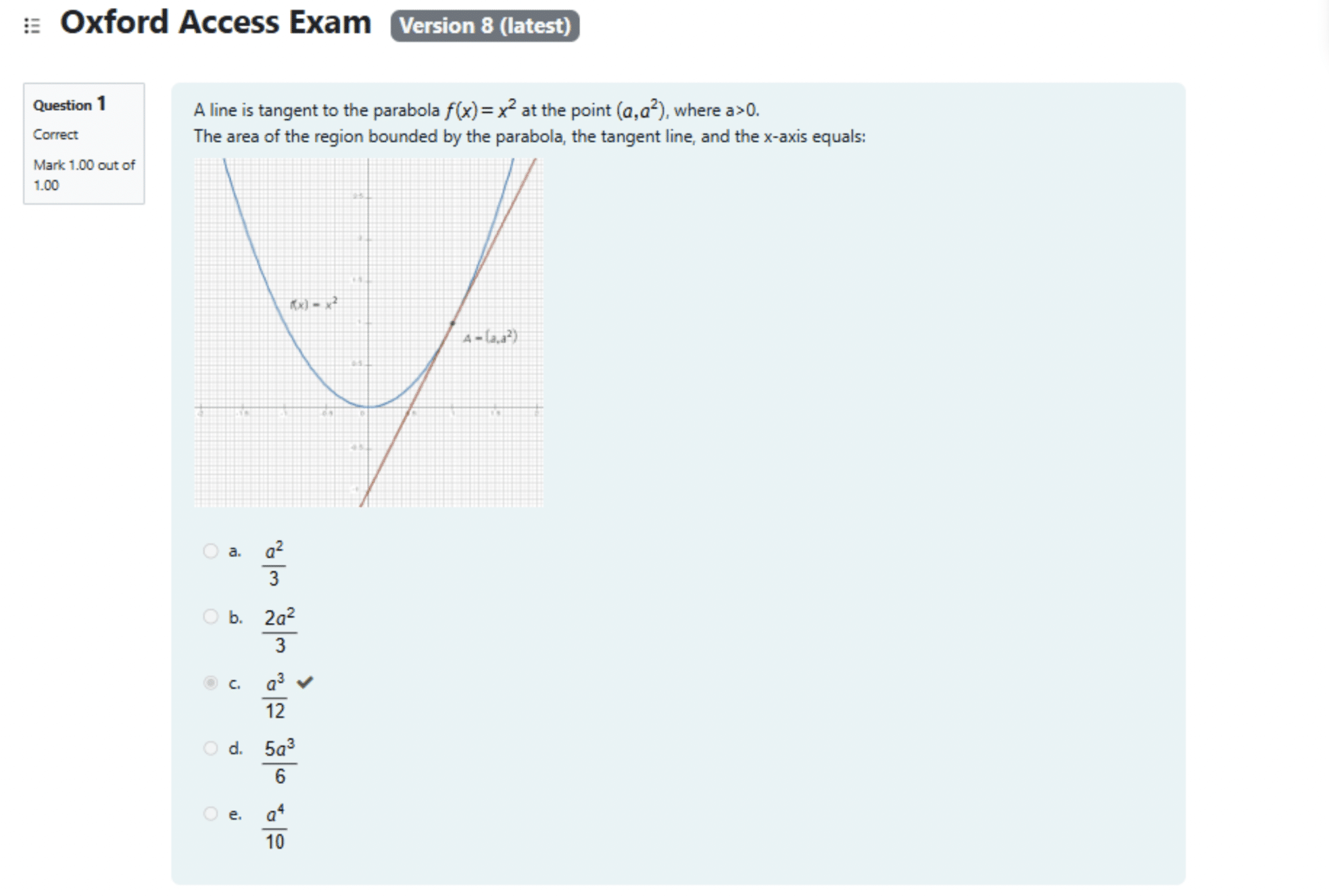

And so we come to the end of this fascinating problem! If you enjoyed this analysis or found it useful to better understand the solving process, feel free to share it with other math enthusiasts!
Now we challenge you: do you dare to calculate the area formed by the curve y = x3 and its tangent at the point (1,1)? Share your solution or your ideas in the comments. We’d love to hear your approach!


